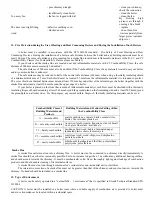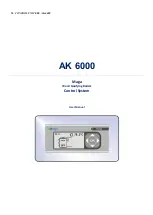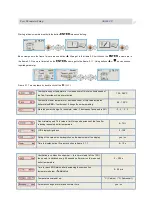
- poor chimney draught
- clean your chimney,
check the connection
- insufficiently clean boiler
- clean the boiler
Too noisy fan
- the fan is clogged with dirt
- clean the fan
By
blowing
high
pressure air through it
or using a fine brush
The door is not tight fitting
-defective caulking cord
- replace
- blocked nozzle
- do not burn fine
wood
waste separately from
larger pieces (sawdust,
chips etc.)
11.
Fire Protection during the Use of Heating and Heat Consuming Devices and During the Installation of Such Devices
A boiler must be installed in accordance with the STN 061008 standard – Fire Safety of Local Heating and Heat
Consuming Devices. During the installation of a boiler a safe distance between the boiler and any building materials must be at
least 200 mm. The same safe distance is also required for a smoke flue located near inflammable materials of the B, C1, and C2
Combustibility Classes (for Combustibility Classes please see Table 1).
If your boiler and the smoke flue are located near any inflammable materials with C3 Combustibility Class, the safe
distance of 200 mm must necessarily be doubled!
The safe distance of 200 mm must also be doubled if the Combustibility Class of any materials located near your boiler
and/or your smoke flue is unknown.
The safe distance may be reduced to half of the normal safe distance (100 mm) when using a thermally insulating shield
of a minimum thickness of 5 mm. Such shield must be located 25 mm from the inflammable material it is intended to protect.
The cover shield or a thermal barrier must extend at least 150 mm beyond either of the lateral edges of a boiler (together with the
smoke flue outlet) and at least 300 mm beyond the upper edge of a boiler.
If your boiler is placed on the floor that is made of inflammable material(s), such floor must be shielded with a thermally
insulating fireproof board extending at least 300 mm beyond the ground plan on the firetending side and at least 100 mm beyond
the ground plan on all other sides. For this purpose, any incombustible, fireproof,. thermally insulating materials can be used.
Combustibility Class of
Building Materials and
Products
Building Materials and Products Falling within
the Combustibility Class
A – incombustible
granite, sandstone, concrete, bricks, ceramic tiles,
mortar, fire retardant plasters etc.
B – not easily combustible
wood-wool slabs, isomin, lignostone, slabs of basalt
wool, glass fiber slabs, novodur etc.
C1 – hardly combustible
deciduous hard wood, hobrex, laminated paper,
laminated plastic sheets (Formica) etc.
C2 – medium combustible
coniferous wood, wood-chips, wood chipboards,
particle boards etc.
C3 – easily combustible
Fiberboards (hardboard and the like), polyurethane,
polystyrene, polyethylene
Smoke Flue
A smoke flue outlet must run into a chimney flue. A boiler must not be connected to a chimney directly/immediately. A
smoke flue should be as short as reasonably possible, but in no instance longer than 1 m, without any additional heating surface,
and should ascend towards the chimney. It must be mechanically solid, fixed, thoroughly tight against leakage of combustion
products, and should enable cleaning of its internal surfaces.
A smoke flue must not run through someone else’s residential or non-residential units or facilities.
The internal cross section of a smoke flue must not be greater than that of the chimney and must not narrow towards the
chimney. No bends should be included in a smoke flue.
12.
Type of Environment
A boiler can be safely operated in a "normal NM – 1 environment" that is specified in Slovak Technical Standard STN
332000-3.
CAUTION: A boiler must be installed in a boiler room where a suitable supply of combustion air is provided. A boiler must
under no circumstances be located within a residential space.
Содержание MA 15
Страница 14: ...18 CONTROL UNIT ERS AK 6000 AK 6000 Maga Wood Gasifying Boilers Control System User Manual...
Страница 23: ......







































